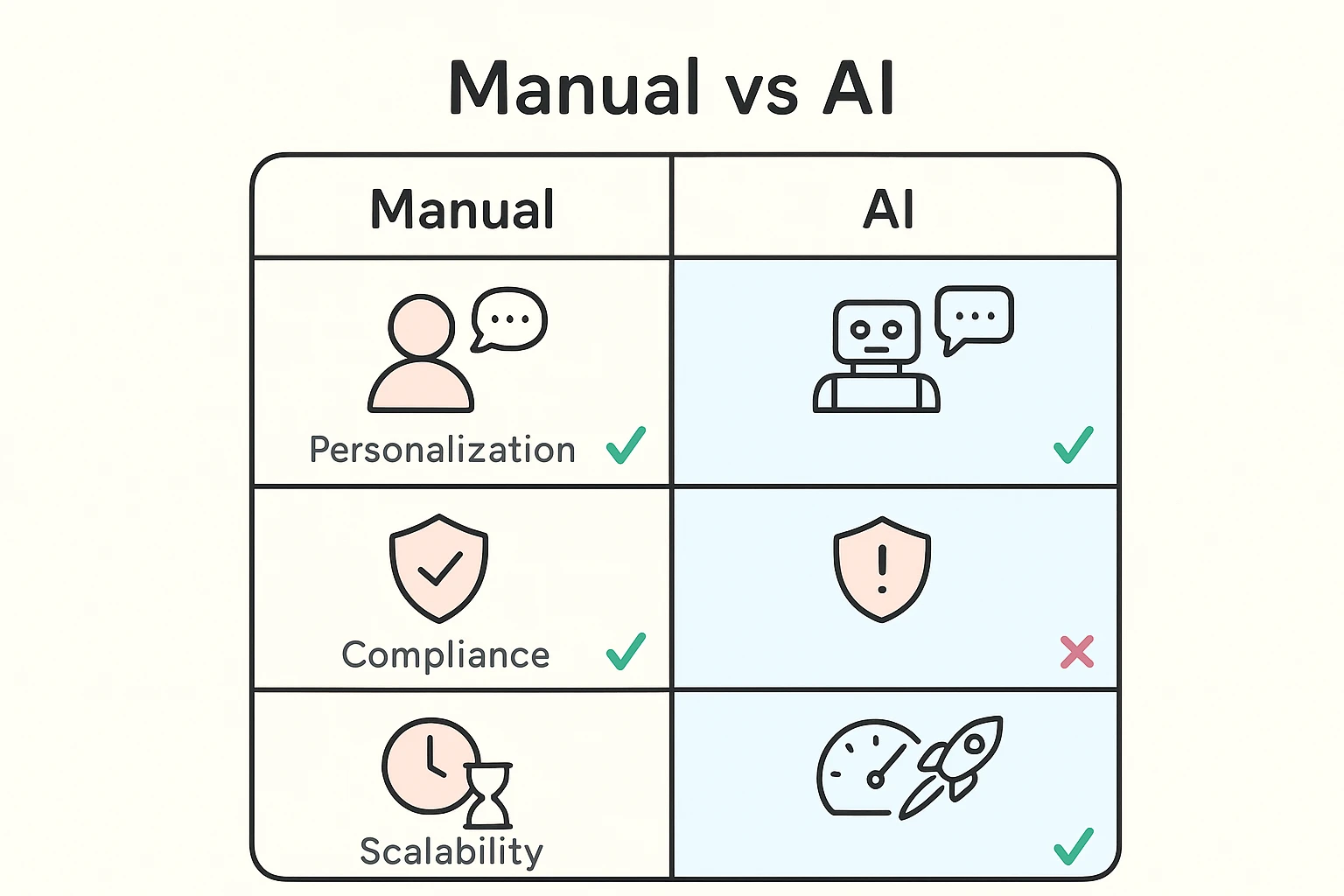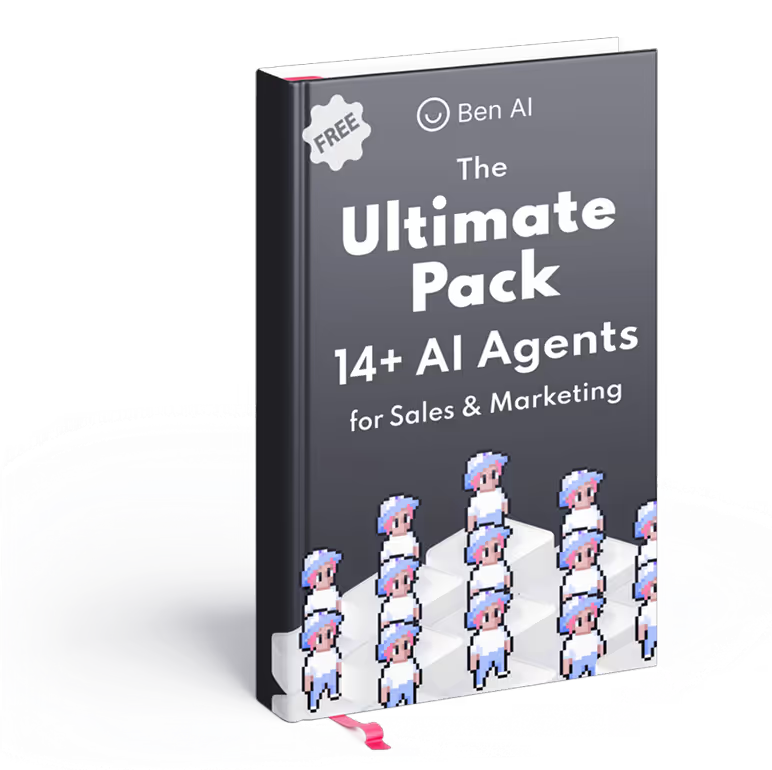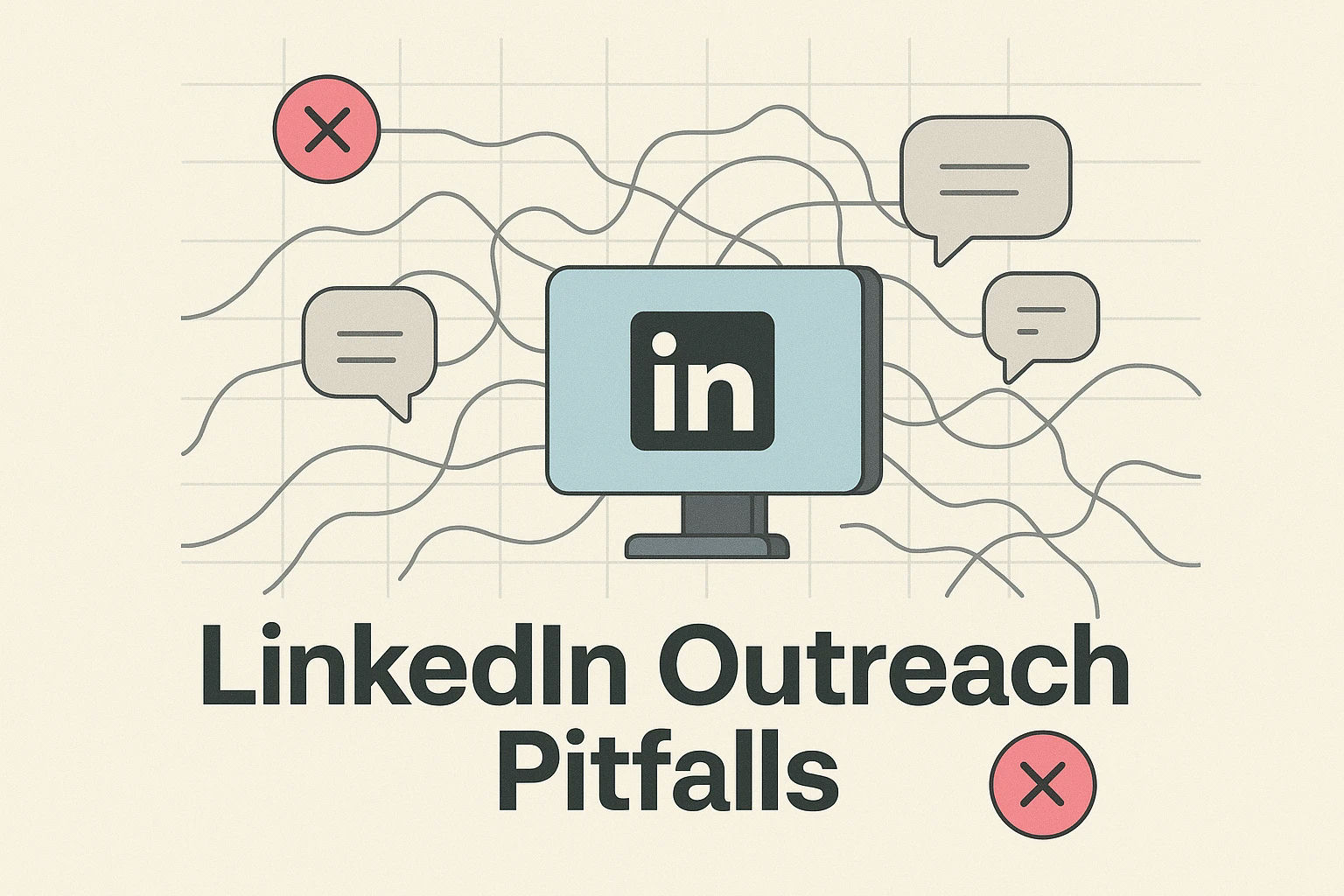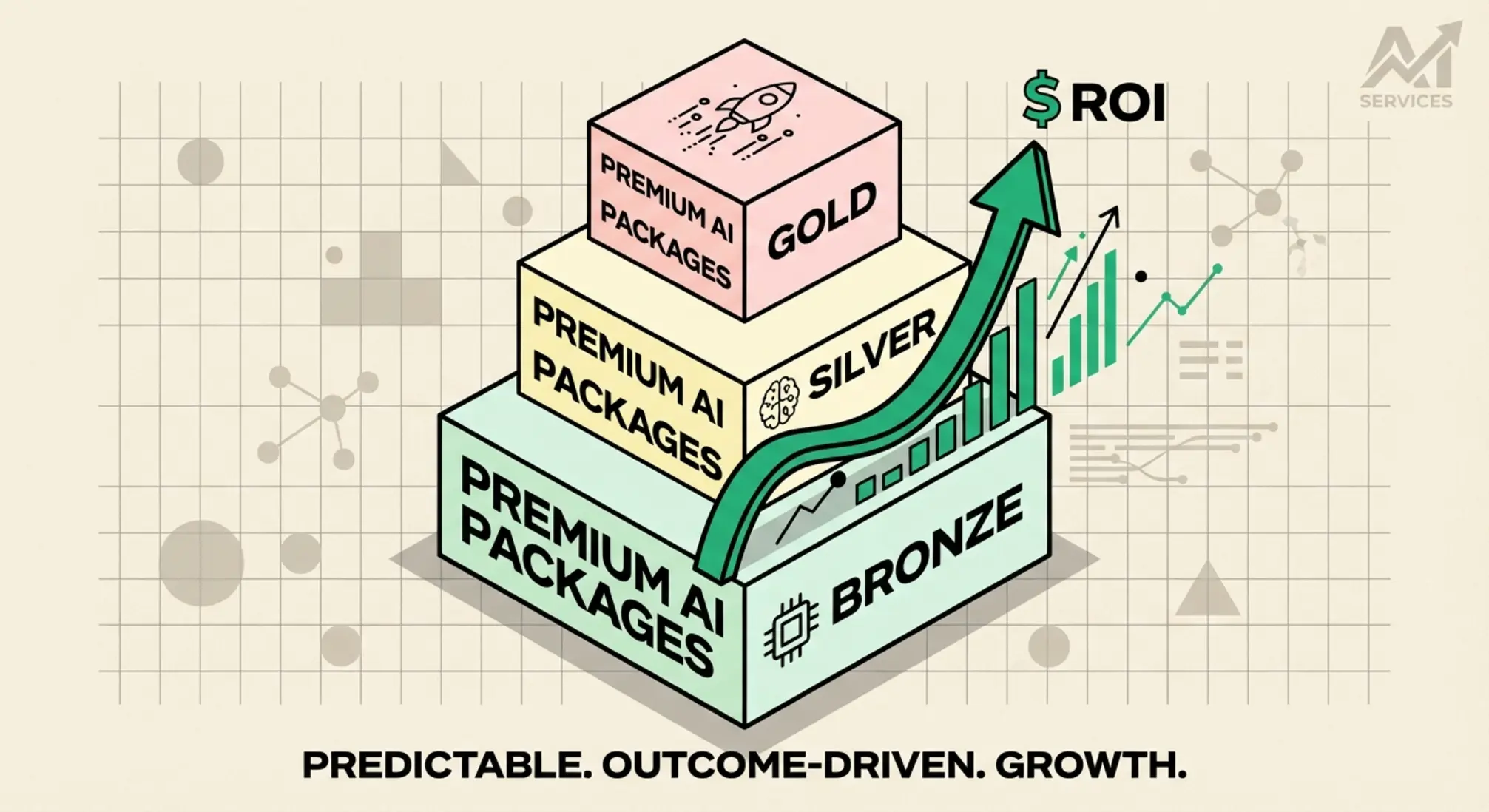Navigating the Labyrinth: Challenges and Limitations of AI LinkedIn Outreach Automation
AI-powered LinkedIn outreach automation presents both unprecedented opportunities and significant challenges for modern businesses. This comprehensive guide clarifies the inherent risks, platform restrictions, and ethical considerations, providing decision-makers with the insights needed to navigate their evaluation journey successfully. Adopting a nuanced approach ensures the strategic integration of AI tools, maximizing their benefits while mitigating potential pitfalls.
AI LinkedIn outreach automation leverages artificial intelligence to streamline and scale prospecting, lead generation, and relationship building on the LinkedIn platform. This technology often automates tasks such as connection requests, message sequencing, and personalized content delivery, aiming to enhance efficiency and expand reach. However, a critical evaluation reveals that relying solely on automation without human oversight can lead to significant setbacks, including account restrictions and reputational damage. According to an analysis of various AI outreach tools, a substantial portion of users face challenges related to LinkedIn's evolving policies and the ethical implications of automated interactions.
This article delves into the core limitations and offers actionable mitigation strategies, guiding you toward informed decisions and effective implementation.
What are the Core Challenges of AI LinkedIn Outreach Automation?
The core challenges of AI LinkedIn outreach automation revolve around inherent algorithmic limitations, strict platform restrictions, and the difficulty in achieving genuine personalization. Businesses must meticulously assess these challenges to deploy AI solutions effectively and avoid detrimental outcomes. A nuanced understanding of AI's capabilities and its boundaries within professional networking platforms is essential.
How do Algorithm Biases Affect AI LinkedIn Outreach?
Algorithm biases significantly affect AI LinkedIn outreach by inadvertently creating skewed targeting and suboptimal engagement patterns. These biases stem from the training data, which often reflects historical human biases, leading AI models to favor certain demographics, industries, or communication styles while overlooking others. A study from VerityAI indicates that AI algorithms can generate "personalization" that alienates up to 30% of prospects due to misinterpretations of user profiles or generic messaging that misses genuine relevance. Consequently, outreach efforts become less effective, potentially alienating viable prospects who do not fit the biased profile. Businesses leveraging AI solutions must continuously audit their AI models to mitigate these inherent biases.
What Platform Restrictions Impact Automated Outreach?
Platform restrictions critically impact automated outreach, primarily through LinkedIn's stringent Terms of Service and evolving spam detection algorithms. LinkedIn actively discourages and penalizes automation that mimics human behavior at an unnatural scale, frequently updating its policies to maintain a high-quality user experience. These restrictions include limits on connection requests, messages sent within a specific timeframe, and the outright prohibition of third-party tools that interact with the platform’s interface. According to LinkedIn Pulse by Hetal Mehta, the platform's enforcement mechanisms can lead to temporary account suspensions, permanent bans, and reduced visibility for profiles flagged for suspicious activity. Businesses risk account suspension if their automation tools violate these strict guidelines.
Why do Personalization Pitfalls Occur in AI Outreach?
Personalization pitfalls occur in AI outreach because achieving truly individualized, contextually relevant messaging requires a level of nuanced understanding that current AI models often lack. While AI excels at identifying patterns and generating text, it struggles with interpreting subtle cues, emotional intelligence, and the deeper context of a professional relationship. Leadsforge AI Blog highlights that AI personalization often defaults to superficial elements like name, company, or job title, failing to craft messages that resonate on a deeper level. This results in generic, templated messages that prospects easily identify as automated. Consequently, response rates decline, and the perceived value of the outreach diminishes, damaging the sender's professional reputation.
How do Data Privacy Concerns Influence AI Outreach?
Data privacy concerns profoundly influence AI outreach, necessitating strict adherence to regulations and ethical standards. AI tools frequently process large volumes of personal data to identify prospects and tailor messages, raising questions about data collection methods, storage security, and consent. VerityAI's investigative blog indicates that many automation tools operate in a grey area, potentially violating data privacy regulations like GDPR and CCPA by scraping or processing data without explicit user consent. This exposes businesses to significant legal and ethical risks, including hefty fines and damage to brand trust. Upholding robust AI governance practices becomes paramount to ensure compliance and maintain user confidence.
What are the Risks and Limitations Associated with AI LinkedIn Outreach Automation?
The risks and limitations associated with AI LinkedIn outreach automation extend beyond technical hurdles, encompassing critical areas like compliance, spam reputation, and long-term brand damage. Decision-makers must understand these multi-faceted risks to implement AI solutions responsibly. Unchecked automation can lead to severe consequences for individuals and organizations alike.
How Does Non-Compliance Lead to Account Bans and Penalties?
Non-compliance with LinkedIn's Terms of Service directly leads to account bans and penalties because the platform actively monitors for automated behavior that degrades user experience. LinkedIn's policy explicitly states that using third-party software to automate actions is prohibited. Tools that circumvent these rules by mimicking human interaction, or operating at a scale impossible for a human, are swiftly detected. Quora's LinkedIn Mastery discussion forums frequently cite instances where aggressive automation resulted in warnings, temporary suspensions, or permanent account termination, often without prior notice. This punitive action protects the platform's integrity but poses a significant risk to businesses relying heavily on automation for lead generation.
What is the Impact of Spam Risk and Reputational Damage?
The impact of spam risk and reputational damage from AI LinkedIn outreach automation is substantial, eroding trust and undermining future business opportunities. Generic or overly frequent automated messages are often perceived as spam, leading recipients to ignore, report, or block the sender. LinKapture’s guide emphasizes that these actions directly harm a professional's reputation, making future manual or legitimate outreach efforts less effective. A poor sender reputation translates into lower connection acceptance rates, reduced message open rates, and a diminished professional standing within the target network. In essence, while automation aims to expand reach, it can inadvertently close doors by alienating prospects.
What Emerging Trends and Technical Debt Issues Impact AI Outreach?
Emerging trends such as evolving regulatory landscapes and the accumulation of technical debt significantly impact AI outreach. Regulatory bodies are increasingly scrutinizing AI applications, especially concerning data privacy and algorithmic fairness, leading to new compliance requirements that existing automation tools might not meet. Furthermore, relying on rapidly developed AI tools can create technical debt, where quick fixes and patchwork integrations lead to complex, unstable systems that are difficult to maintain or upgrade. This can hinder a company's ability to adapt to new platform policies or integrate more sophisticated AI SEO automation solutions. The VerityAI blog also discusses how scaling automation too quickly without robust, adaptable infrastructure exacerbates these issues, turning initial efficiency gains into long-term operational burdens.
What Mitigation Strategies Minimize AI LinkedIn Outreach Risks?
Mitigation strategies effectively minimize AI LinkedIn outreach risks by blending sophisticated AI technology with essential human oversight and rigorous compliance practices. Proactive measures and continuous monitoring are paramount to achieving both efficiency and ethical integrity. Implementing these strategies safeguards professional reputation and ensures long-term success on the platform.

How can Businesses Combine AI Automation with Human Oversight?
Businesses can effectively combine AI automation with human oversight by designing workflows that leverage AI for initial heavy lifting while retaining human review for critical decision points. AI handles tasks such as initial prospect identification, data gathering, and drafting message templates. Human oversight then ensures message quality, contextual relevance, and adherence to brand voice before messages are sent. This hybrid approach significantly reduces the risk of generic or inappropriate communication, as a human verifies the AI’s output for genuine personalization and ethical considerations. Implementing such a workflow can improve response rates by up to 40%, according to the Leadsforge AI Blog, by guaranteeing that each interaction feels authentic.
What are Key Compliance Tips for AI Outreach?
Key compliance tips for AI outreach include regularly reviewing LinkedIn's Terms of Service, utilizing tools that operate within platform guidelines, and prioritizing data privacy. Businesses must select automation tools that do not automate actions at an unrealistic scale or attempt to bypass LinkedIn's API restrictions. Crucially, obtaining explicit consent for data processing and adhering to global data protection regulations like GDPR or CCPA remains non-negotiable. Hetal Mehta's LinkedIn Pulse article underscores the importance of a "slow and steady" automation strategy, emphasizing that tools simulating natural human behavior at a moderate pace are less likely to trigger LinkedIn's spam detection systems.
Which Personalization Best Practices Improve AI Outreach Effectiveness?
Personalization best practices that improve AI outreach effectiveness move beyond basic name-insertion to incorporate deeper, contextually rich insights. This involves:
- Segmenting Audiences: Targeting specific groups with tailored messaging based on industry, role, or shared interests.
- Leveraging Behavioral Data: Utilizing insights from prospect activity (e.g., content engagement, group memberships) to inform message content.
- Crafting Value-Driven Introductions: Focusing on how the outreach benefits the recipient, rather than immediately pitching a product or service.
Medium discussions on automation challenges highlight that truly effective AI personalization requires high-quality, relevant data to inform AI models. Implementing a robust content optimization AI for profiling helps AI tools generate messages that resonate with individual needs, leading to higher engagement and conversion rates.
What Alternative Strategies Exist to Pure AI Automation?
Alternative strategies to pure AI automation focus on building genuine connections through manual effort, hybrid approaches, and strategic content engagement. These methods prioritize quality interactions over sheer volume, yielding more sustainable and higher-quality relationships. Businesses seeking to enhance their LinkedIn presence without the risks of aggressive automation can consider these proven alternatives.
How Does Manual Outreach Compare to AI Automation?
Manual outreach compares favorably to AI automation in terms of authenticity, deep personalization, and relationship building, though it scales less efficiently. With manual outreach, individuals meticulously research prospects, craft bespoke messages, and engage in genuine conversations. This hands-on approach allows for a level of nuance, emotional intelligence, and contextual understanding that AI currently cannot replicate. A comparison by Linkbl.com for startups shows that manual methods excel in establishing strong rapport and trust, leading to higher conversion rates for complex sales or partnerships. However, manual outreach demands significant time and resources, limiting its scalability for large-volume prospecting.

What are Hybrid Outreach Models?
Hybrid outreach models combine the efficiency of AI automation for repetitive tasks with the qualitative benefits of human interaction for critical engagements. This approach often involves using AI for initial lead qualification, drafting personalized message templates, and scheduling, while human sales professionals handle final message review, personalized follow-ups, and relationship nurturing. Intelus Agency’s blog emphasizes that hybrid models leverage AI's speed for scale without sacrificing the personal touch. This balance ensures compliance, maintains high personalization standards, and builds genuine connections more efficiently than pure manual outreach alone. Organizations seeking to build an innovation culture with AI frequently adopt these hybrid strategies.
How does Strategic Content Engagement Support Outreach Goals?
Strategic content engagement supports outreach goals by establishing thought leadership, fostering community, and attracting inbound interest without direct automation. This involves consistently sharing valuable content, participating in relevant groups, commenting thoughtfully on posts, and engaging in discussions. By providing value upfront, professionals attract prospects organically, making subsequent direct outreach more welcome and effective. This method builds credibility and establishes the sender as a trusted resource, rather than an intrusive marketer. When combined with targeted manual follow-ups, strategic content engagement offers a powerful, compliant, and highly effective alternative to aggressive AI-driven automation.
Frequently Asked Questions about AI LinkedIn Outreach Automation
What are the biggest risks of AI LinkedIn outreach automation?
The biggest risks of AI LinkedIn outreach automation include potential account bans for violating LinkedIn's Terms of Service, reputational damage from generic or spammy messaging, and significant data privacy concerns. Businesses often face decreased response rates and alienated prospects if automation is not carefully managed. These risks collectively undermine the professional standing and effectiveness of outreach campaigns.
How can businesses avoid LinkedIn account bans?
Businesses avoid LinkedIn account bans by adhering strictly to the platform's Terms of Service, using automation tools that simulate natural human behavior at a moderate pace, and prioritizing manual review for all outbound communications. Limiting daily connection requests and messages to reasonable numbers, and avoiding rapid, large-scale automation, significantly reduces detection risk. Compliance also involves choosing tools that do not attempt to bypass LinkedIn's API or engage in prohibited scraping activities.
What personalization techniques improve AI outreach effectiveness?
Personalization techniques that improve AI outreach effectiveness go beyond basic template variables to include deep prospect research, segmenting audiences based on specific shared interests or behaviors, and crafting messages that address explicit pain points or goals. AI tools can analyze public profiles to identify these deeper insights, but human review ensures the messages are truly relevant and authentic. This approach shifts personalization from superficial data points to meaningful, value-driven communication.
Is LinkedIn automation compliant with platform terms?
LinkedIn automation is generally not compliant with platform terms if it involves third-party tools that automate actions at an unrealistic scale or attempt to bypass LinkedIn's direct interface. LinkedIn's Terms of Service explicitly prohibit "using bots or other automated methods to access LinkedIn, add or download contacts, send or redirect messages." Certain, highly restricted tools that simulate human activity at a very low volume and with heavy human oversight might operate in a grey area, but the risk of non-compliance remains high. The safest approach involves hybrid models combining limited AI assistance with significant human control.
What alternative strategies exist to pure automation?
Alternative strategies to pure automation include manual outreach, hybrid models combining limited AI assistance with human oversight, and strategic content engagement. Manual outreach allows for unparalleled personalization and relationship building. Hybrid models optimize efficiency by using AI for preliminary tasks while humans handle nuanced interactions. Strategic content engagement builds authority and attracts inbound interest organically, fostering genuine connections without direct automated messaging.
Join Our Growing AI Business Community
Get access to our AI Automations templates, 1:1 Tech support, 1:1 Solution Engineers, Step-by-step breakdowns and a community of forward-thinking business owners.

Latest Blogs
Explore our latest blog posts and insights.




